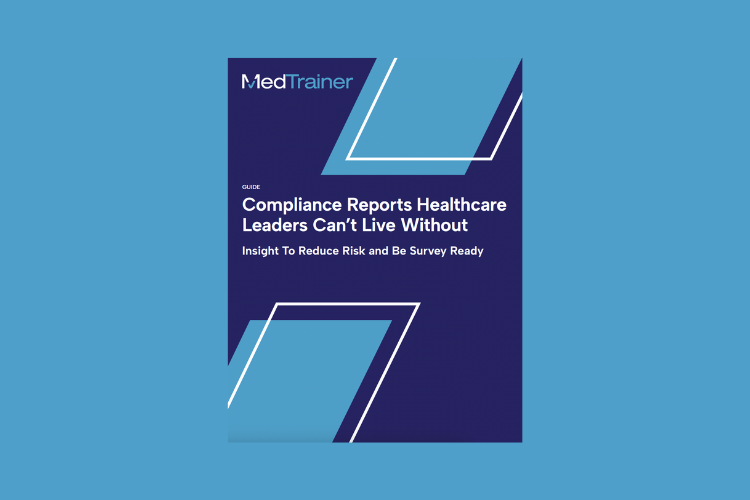Healthcare compliance has undergone significant transformations, largely driven by evolving regulations and technological advancements. From traditional paperwork to contemporary digital solutions, the methods of tracking compliance have evolved considerably.
In this exploration of healthcare compliance tracking tools, I’ll delve into the journey of these changes, tracing the evolution from manual methods to the sophisticated processes in use today.
Embracing Change: The Early Days of Manual Processes
In the early days of healthcare compliance management, organizations relied on manual methods to track and monitor adherence to regulatory requirements. Manual documentation, recordkeeping, and checklists formed the foundation of compliance efforts. While functional at the time, these methods were labor-intensive, error-prone, and lacked the efficiency to manage the growing regulatory requirements.
The Digital Revolution: Transitioning to Early Digital Solutions
Organizations underwent a transitional period where semi-automated processes, such as basic databases or document management software, were introduced to enhance efficiency. Spreadsheets emerged as a more organized and structured approach to compliance tracking than purely manual methods. However, these interim solutions still had limitations regarding scalability, real-time monitoring, and advanced features.
Specialized Compliance Software: Adapting to Change
The introduction of dedicated compliance tracking tools marked a significant shift in approach for various industries, not just healthcare. These digital solutions, initially developed to address the unique compliance needs across sectors like finance, manufacturing, pharmaceuticals, and telecommunications, provided a new level of efficiency, accuracy, and scalability. These tools centralized compliance data, automated reminders, and alerts and enabled real-time monitoring. As a result, organizations were better equipped to manage compliance risks and enhance overall effectiveness proactively.

The best compliance and credentialing reports to surface critical insights and keep you survey ready.
The Modern Era: Tailored Compliance Tracking Tools
As regulatory requirements grew more intricate, the necessity for healthcare-specific compliance tools intensified. This shift was imperative to ensure that organizations could effectively address the unique regulatory demands and complexities inherent in their respective sectors, enhancing accuracy and decreasing risk. Companies such as MedTrainer have contributed to the evolution of compliance solutions by offering specialized products tailored to the healthcare industry. These solutions aim to streamline processes and aid in meeting compliance with ever-evolving regulations.
Today’s compliance tracking tools for enterprise healthcare organizations are built to scale up as companies improve the processes that make operations run. Simply tracking compliance is expected in software, what’s important is how the technology improves quality and informs business decisions. Solutions should provide real-time data on what employees have completed training and who has acknowledged policies. As important, data allows leadership to analyze incident trends and quickly address issues.
When searching for a compliance management system, consider several vital factors to ensure its effectiveness in meeting your organization’s needs. Here are three essential aspects I recommend you look for in a compliance tracking tool:
- Integrated system/unified platform. Choose an integrated, unified platform that brings all compliance functions together in a single place. This eliminates the need for multiple, disjointed systems or manual processes while streamlining and centralizing compliance efforts. This includes policy management, training, auditing, and incident reporting.
- Industry-specific focus. Pick a system tailored to address healthcare organizations’ specific compliance challenges and regulations and ensure all necessary compliance elements are included. This industry-specific focus helps organizations stay up-to-date with evolving healthcare regulations and maintain compliance with standards such as HIPAA, HITECH, and others.
- Ease of use. Ensure the platform has an easy-to-use, intuitive interface so employees aren’t turned off by too many steps. Choose a vendor that offers 24/7 customer support, answers calls within two rings, and solves most problems within hours, not days.
Remember that these aren’t the only critical features to look for in compliance management software. It’s important to evaluate your needs for a compliance management tool and seek out a platform with specific solutions tailored to them.
Looking Ahead: Embracing Innovation for a Brighter Future
From manual processes to modern digital solutions, the evolution of healthcare compliance is characterized by a relentless pursuit of excellence and a commitment to patient-centric care. The historical complexity of compliance reminds us that it will continue to evolve, emphasizing the significance of ongoing advancement and innovation to address future challenges effectively.
Let us continue to embrace innovation, harnessing the power of technology to drive transformative change and usher in a brighter future for healthcare compliance. To learn more about revolutionizing your compliance management, talk to a MedTrainer expert today for personalized guidance and support.
